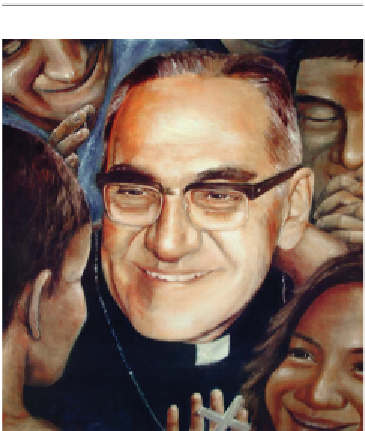Travel Reference
In-Depth Information
As a Liberation h eologian, Romero invited his followers to see Christ-
mas as the story of a poor, homeless mother with a hungry baby. Romero
taught that the lessons and inspiration of ered by the Bible were tools for the
faithful as they dealt with the struggles of their day-to-day lives.
Because Archbishop Oscar Romero asked why, he was gunned down
in 1980 in front of his congregation. h
en, dozens of worshippers were
murdered at his funeral.
After the killing of Romero, the poor—emboldened by their Liberation
h eology—rebelled, plunging El Salvador into their long and bloody Civil
Wa r. h e united guerilla front (FMLN) expected a quick win, but the US
under President Reagan spent $1.5 million a day to keep that from happen-
ing. With the success of the
Sandinistas in Nicaragua in
July 1979, Reagan was deter-
mined to stop the spread of
what he considered a commu-
nist threat.
Salvadoran forces
assumed, because the gue-
rillas were maintaining their
strength, that innocent civil-
ians in leftist-controlled terri-
tory were no longer innocent.
Civilian women and children
were considered combatants—
fair game—in order for the
popular revolt to become less
popular. As if draining the sea to kill the i sh, right-wing forces targeted and
terrorized civilians with a brutal vengeance. Notorious “death squads” wrought
havoc on El Salvador's poor. Today this policy, considered an option for quell-
ing insurgencies around the world, is known as the “Salvador Option.”
While the FMLN could have fought on, the toll on their country was
too great. In 1984, negotiations began that i nally led to a 1992 peace accord.
h e negotiated settlement ending the Civil War meant the guerilla forces
would trade in their guns for a spot in the government. Suddenly, the guerillas
shaved, washed, and found themselves members of parliament representing
a now-peaceful FMLN party.
El Salvador's Archbishop Oscar Romero.















































































